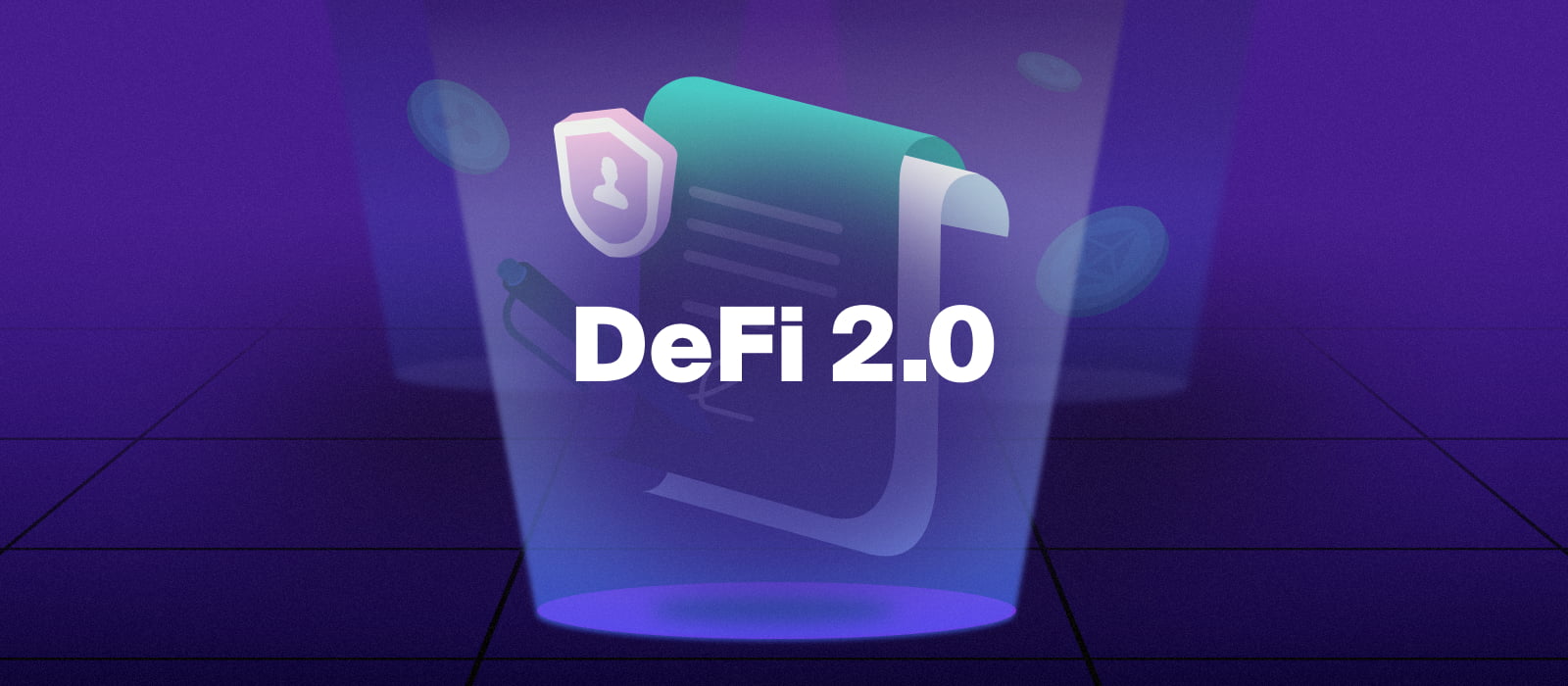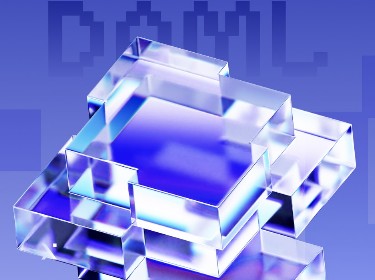If you have only just picked up the essence of the DeFi concept, stay alert, as the DeFi 2.0 upgrade is coming. But what exactly is it and can it help tackle the problems that the first generation of DeFi has faced?
A popular blockchain-powered innovation, DeFi has been evolving at breakneck speed, catching the attention of blockchain enthusiasts from all over the world. This rapid evolution has also spurred a demand for specialized services, such as DeFi lending platform development services, and DeFi staking platform development as businesses seek to capitalize on the technology.
While DeFi has proven to be capable of performing a multitude of functions and bringing an innovative edge to the traditional and conservative financial domain, DeFi protocols still suffer from some drawbacks such as liquidity and scalability challenges, poor user experience, security implications, and so on.
DeFi 2.0 has been rolled out as a solution to the issues that DeFi has been facing. But will it be able to solve them and live up to the expectations of the blockchain community?
Check out this article to get a better understanding of DeFi 2.0, its key features, objectives, and risks, as well as finding out about recent DeFi 2.0 projects.
What is DeFi 2.0 and how is it different from DeFi 1.0?
DeFi 2.0 is a novel movement in the blockchain world comprising a set of decentralized finance protocols that are predicated on previous DeFi achievements.
These projects have the aim of building on the efforts of DeFi 1.0 and bringing improvements to aspects such as liquidity, scalability, governance, user experience, and security as well as offering consumers more sophisticated incentives on their way to financial freedom.
The second generation of decentralized finance is expected to preserve the legacy established by prominent DeFi protocols such as Uniswap, Aave, MakerDAO, Compound, and many others. Chiefly, it is also slated to roll out many other new solutions that will contribute to the burgeoning DeFi economy.
Find out about the basics of DeFi and discover how it has impacted the financial world
What are the key features and capabilities of DeFi 2.0?
![]()
Given that DeFi 2.0 has been put forward as a solution to the main challenges of DeFi 1.0, it is necessary to dig into the particular shortcomings of the first iteration of DeFi and discover how DeFi 2.0 seeks to solve them.
#1 DeFi 2.0 helps unlock greater value from staked funds
With the first iteration of decentralized finance, users were able to stake a token pair in a liquidity pool. Afterwards, they would get liquidity provider (LP) tokens that could be staked again with a yield farm in order to earn more rewards.
With DeFi 2.0, liquidity and capital efficiency can be upgraded to a whole new level. Users can enjoy greater value from staked assets by providing extra layers of utility for yield farming and enabling users to utilize yield farm LP tokens as collateral for loans.
#2 DeFi 2.0 grants better protection from financial losses
While offering groundbreaking opportunities and capabilities, the DeFi industry has also been exposed to many attacks, hacks, and smart contract vulnerabilities that have led to substantial financial losses.
As well as this, users run the chance of facing the risk of impermanent losses. This means that if a token price drops, the user’s funds locked in a DeFi protocol can have considerably less value when withdrawn.
Fortunately, DeFi 2.0 offers insurance against such losses for a relatively small fee. This helps encourage investment in liquidity pools and protects investors from big financial losses.
Another benefit of DeFi 2.0 worth highlighting is that it offers more progressive smart contract development services. This means that if the underlying liquidity pool smart contract gets compromised but is covered by the insurance, you should receive a payout.
#3 DeFi 2.0 leverages a variety of blockchains and offers greater scalability
The prevailing majority of the first generation of DeFi protocols are based on the Ethereum blockchain, which relied on the Proof-of-Work consensus mechanism before it transitioned to Proof-of-Stake on September 15, 2022.
When Ethereum was leveraging the PoW consensus, it was capable of performing just 15 transactions per second on average. For DeFi protocols, this meant that transactions were quite sluggish and too expensive.
But DeFi 2.0 is set to make the grade and embrace a considerably wider range of blockchains, the most outstanding being Solana, Binance Smart Chain, Cardano, and Polkadot. These platforms are known for their impressive performance capacity and moderate transaction fees.
#4 DeFi 2.0 provides enhanced user experience
It must be said that not all DeFi protocols can boast a smooth, easy-to-navigate user experience. Lots of present-day DeFi solutions have confusing interfaces and lack explanatory materials that would help educate newbies about the platform’s functioning principles. These challenges have discouraged the wider adoption of decentralized finance and made many would-be enthusiasts unwilling to embrace this novel technology.
To drive mass adoption and attract many more users to DeFi solutions, DeFi 2.0 has shifted its focus to usability. DeFi 2.0 projects therefore strive to be as usable and approachable as possible.
On top of that, the second iteration of DeFi allows traditional financial services to easily integrate DeFi 2.0 protocols into their platforms with the help of APIs and oracles. This will enable users to leverage DeFi protocols directly from common TradFi applications as well as web interfaces.
#5 DeFi 2.0 deals with centralization issues
The initial goal of DeFi was to remove third parties and intermediaries from banking services. Still and all, a large number of DeFi protocols have included some element of centralization and have not incorporated some principles of the Decentralized Autonomous Organization (DAO) either. User funds are stored in smart contracts which are controlled by a certain group of individuals. This centralized aspect has led to a loss of faith among DeFi customers.
The second generation of DeFi protocols, on the other hand, leverages the power of DAOs in dealing with protocol operations, and empowers users to take part in the protocol’s further development and governance.
Take a look at how our blockchain developers created this Solana-powered yield farming and liquidity protocol with enhanced leverage and farming rewards
What DeFi 2.0 protocols are out there?
![]()
A number of DeFi 1.0 projects and incentives such as Compound, Curve, Aave, and dYdX have showcased the powerful disruptive power of decentralized finance, and no one doubts that they will keep on evolving and offering new features to users.
But now is the time to get to know some of the new, revolutionized DeFi 2.0 game changers that are expected to drive and boost the DeFi economy.
Below, we will take a look at novel DeFi protocols such as Olympus DAO, Convex Finance, and Abracadabra.money and see how exactly they could help DeFi enter the mainstream.
Olympus DAO
Olympus DAO is considered to be one of the pioneers in the DeFi 2.0 movement. The protocol’s unique feature is its cutting-edge protocol-owned liquidity (POL) model.
With the POL model, instead of gaining liquidity from yield farming, the Olympus DAO project utilizes bonds. As a result, users are able to purchase LP tokens from third parties and sell their assets to the Olympus Treasury in exchange for the platform’s native OHM tokens at a discount.
Notably, the Olympus OHM tokens are backed by DAI and FRAX stablecoins, which helps them maintain price stability. OHM holders, for their part, can use the tokens to vote on important decisions regarding the DAO’s governance, stake them to make money, and use them on other DeFi platforms.
Convex Finance
Based on Curve Finance (CRV), Convex Finance is a sophisticated DeFi platform that is striving to enhance the performance and user experience of Curve.
The platform is predominantly focused on the interests and requirements of the two core user categories, CRV token holders and Curve liquidity providers. The DeFi project aims to help users boost their rewards and enjoy better UX by offering a user-friendly and easy-to-navigate platform for CRV pledging and liquidity mining.
Abracadabra.money
Abracadabra.money is a lending platform. It comes with its own native protocol incentive token, SPELL, which can be used for voting on proposals and decisions and allows users to earn a platform fee by staking it.
What’s more, the DeFi platform empowers its users to leverage their interest-bearing tokens as a means of collateral for borrowing and minting Abracadabra’s Magic Internet Money (MIM), which is a dollar-pegged stablecoin.
Thanks to this, Abracadabra customers can enjoy a multitude of benefits: improved utilization of their funds, increased user revenue, reduced borrowing costs, and stable interest rates.
Get to know how our developers delivered this innovative and fully decentralized platform providing top liquidity alongside fair token distribution
Should you invest in DeFi 2.0 after all?
Before you decide to invest in a DeFi 2.0 project, you have to do your own extensive research and make sure that you fully understand the specifics and all the ins and outs of the solution you are going to adopt.
As well as this, you need to double-check that your selected DeFi project complies with your financial goals and expectations. Otherwise, no one can guarantee that it will be a roaring success and you will generate enormous revenue.
It’s important to understand that the entire DeFi concept is a risky venture and you’ll need to have your wits about you, remain vigilant, and seek a professional blockchain development company to give you advice on how to go about it.
What does the future of DeFi 2.0 look like?
The DeFi 2.0 movement is poised to address the shortcomings of DeFi 1.0 and take the decentralized finance realm to a whole new level. It also promises to bring about a bunch of benefits: unlocking greater value from staked funds, offering better protection from financial losses and other tech vulnerabilities, attracting a wider range of blockchain platforms, providing enhanced user experience, and dealing with centralization issues.
However, DeFi 2.0 has a long way to go before it delivers on its promises and helps decentralized finance projects gain wider traction. Therefore, always do your research and err on the side of caution before investing in DeFi protocols.
If you have decided to be a game-changer on the DeFi 2.0 scene and deliver your own state-of-the-art solution, you can always reach out to us for help. Our DAO development company alongside seasoned blockchain developers will help you work out a highly secure, scalable, and robust DeFi 2.0 solution that will hit it off with users and enable you to outperform your competitors.
Disclaimer: The information provided in the article is for educational purposes only. It does not constitute advice or recommendations for embracing or investing in decentralized finance and its constituents. Please seek professional advice before taking financial risks.




